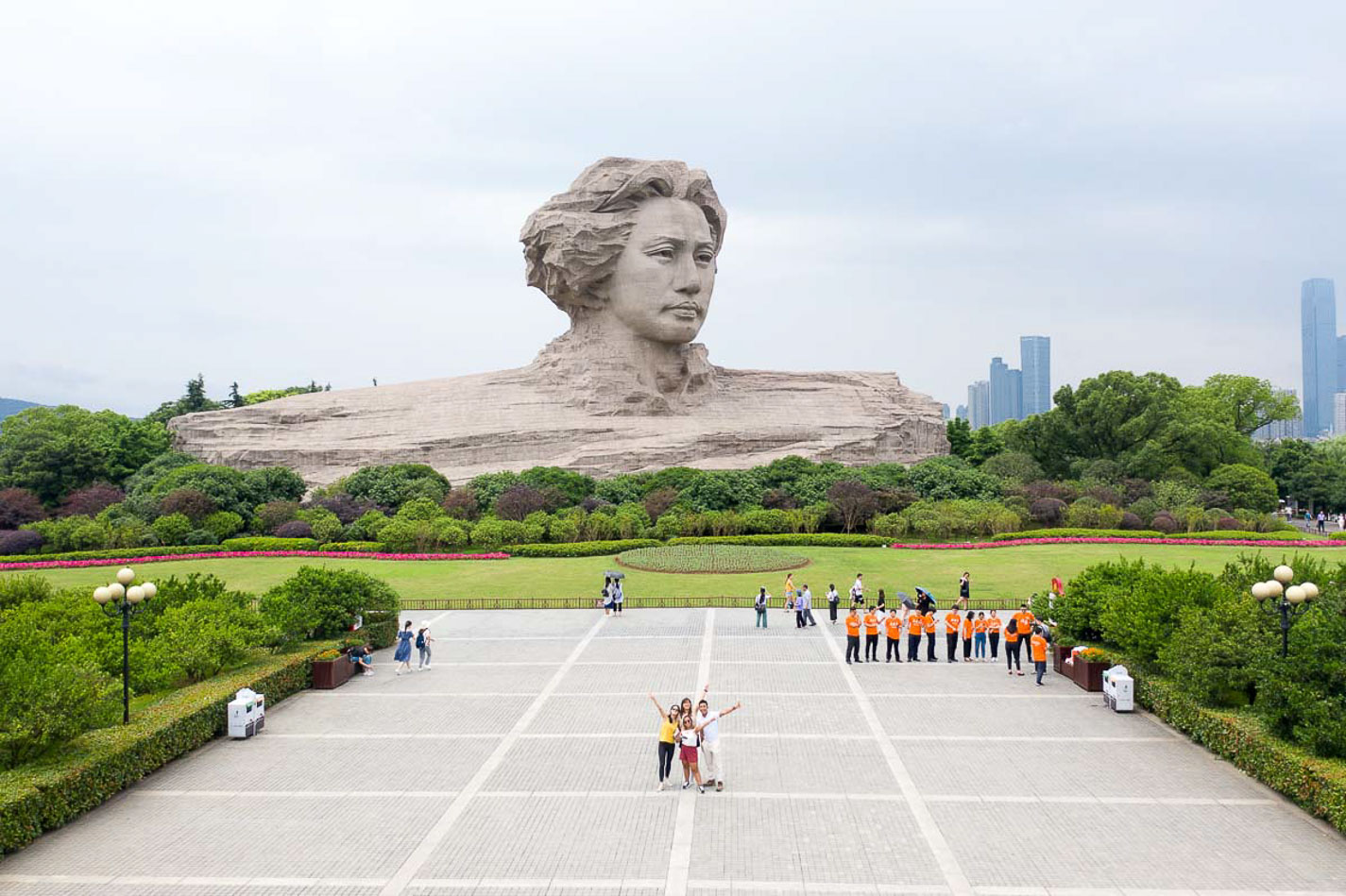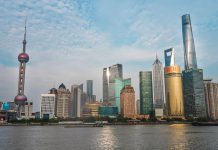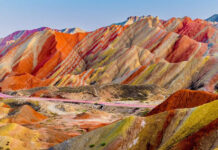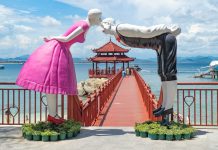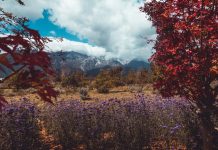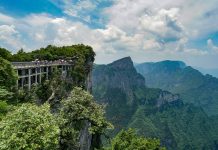This is everything I’ve learnt about Changsha, China, and Mao Zedong — their modern founding father.
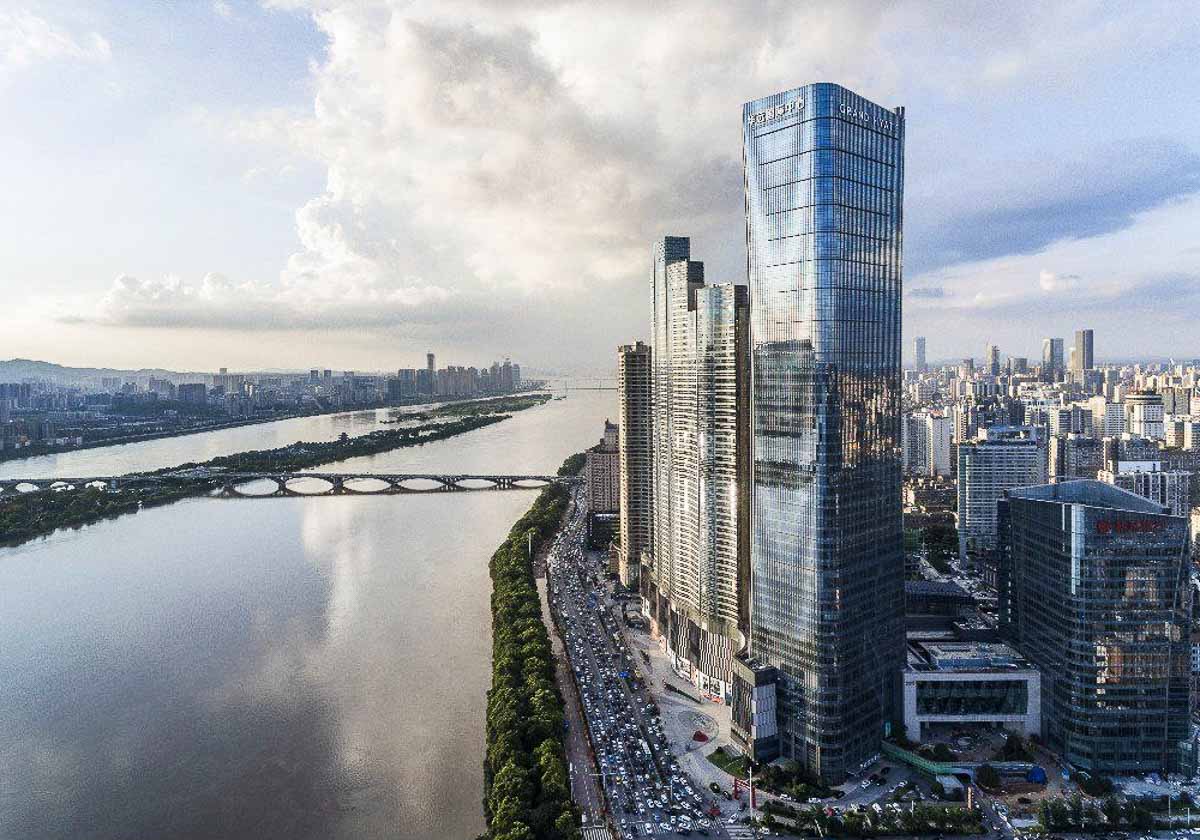
Travelling to a country without understanding how it came to be is like watching Endgame as a standalone movie. It’s still pretty good, just not as good as it could have been.
A month ago I was told I would be heading to Changsha for a work trip. I had no idea where it was in China or what the city was about — all I knew was that their main attraction was an excessively large statue of Mao Zedong’s face. I saw this as an opportunity to drown myself in excessive research, determined not to let a lack of context hinder the experience of a city full of historical significance.
This was my first real attempt at travelling deeper: reading up on the history behind popular places, conversing with locals about the state of affairs, piecing together how everything in the city today fell into place.
How Changsha Became Changsha
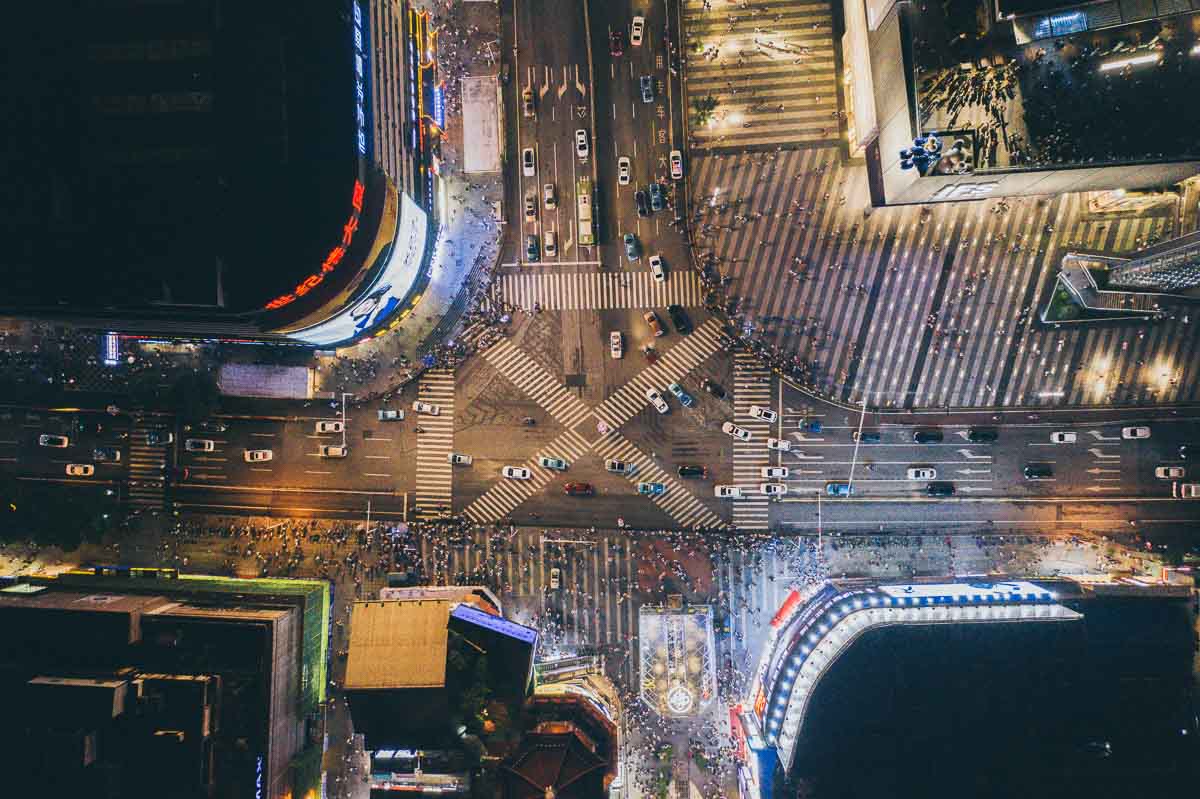
Changsha today is a blossoming metropolitan city — an important commercial, manufacturing and transportation centre in the Hunan province. Modern skyscrapers flank every street corner, with plenty of sightseeing attractions stemmed in scenic natural surroundings providing green respite should one need them. Although in truth, you could probably find 10 other Chinese cities that fit this description.
So what makes Changsha different?
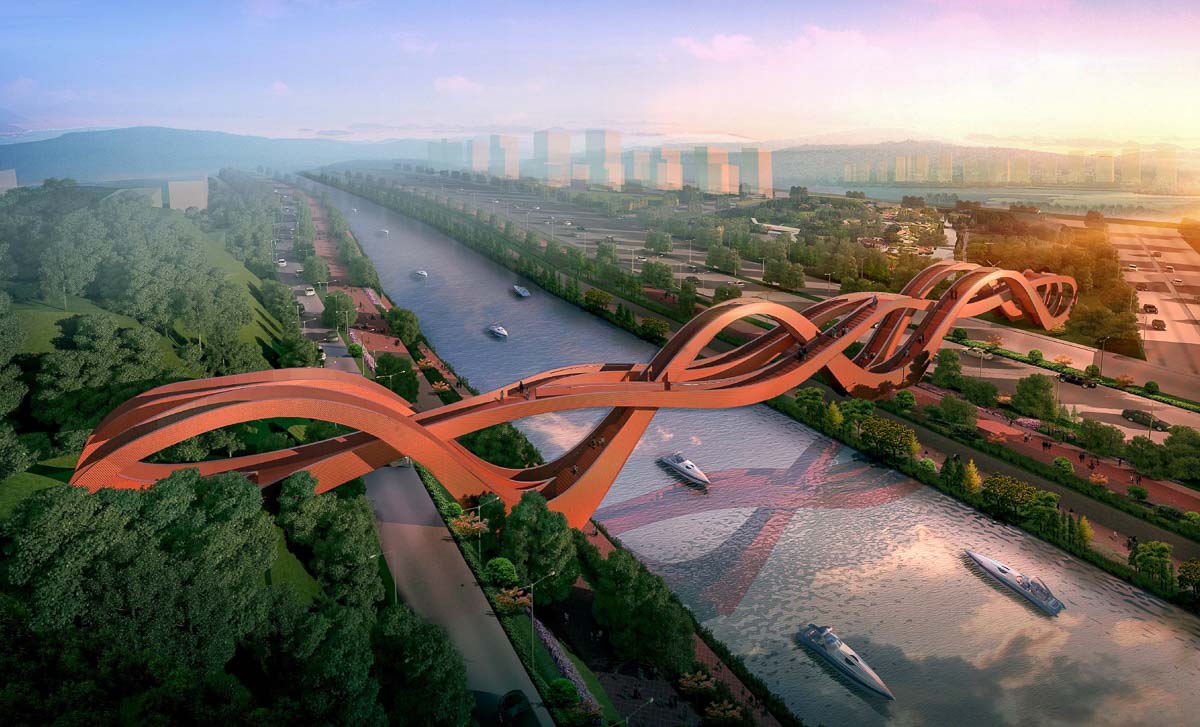
For one, the titles of “Global Green City” and “The Happiest City in China” have been attributed to them, and they are the first Chinese city to be recognised as a UNESCO Creative City in the media arts. An environmentally-conscious population of happy people with an acute appreciation of arts and humanities? Shut up and take my passport.
Having dived into tab after tab of research that stretch out as far as the Great Wall itself, my theory is that there were three main reasons why their burgeoning city is moulded the way it is.
1) A History of Bloodshed and Pandemonium
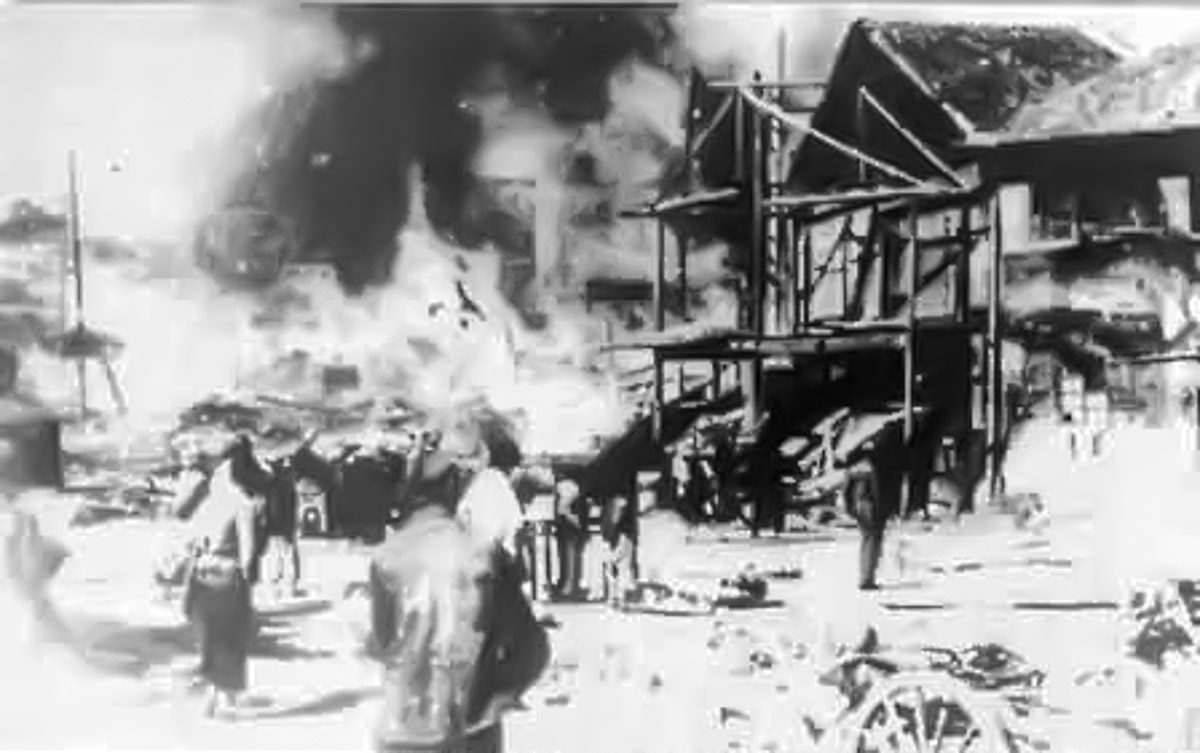
What’s less known amongst the people who’ve travelled to Changsha is that the city hasn’t always had it so good. Due it being the longstanding capital of the Hunan province and its strategic location for cross-island trade, Changsha has never been too far away from often violent territorial disputes.
For instance, the 1938 Wenxi Fire is worst human-caused city-wide fire in recorded Chinese history. 30,000 people were killed. 56,000 buildings burned to the ground. The worst part? The country’s very own leaders orchestrated the disaster, for fear that the Japanese would profit if they succeeded in conquering them.
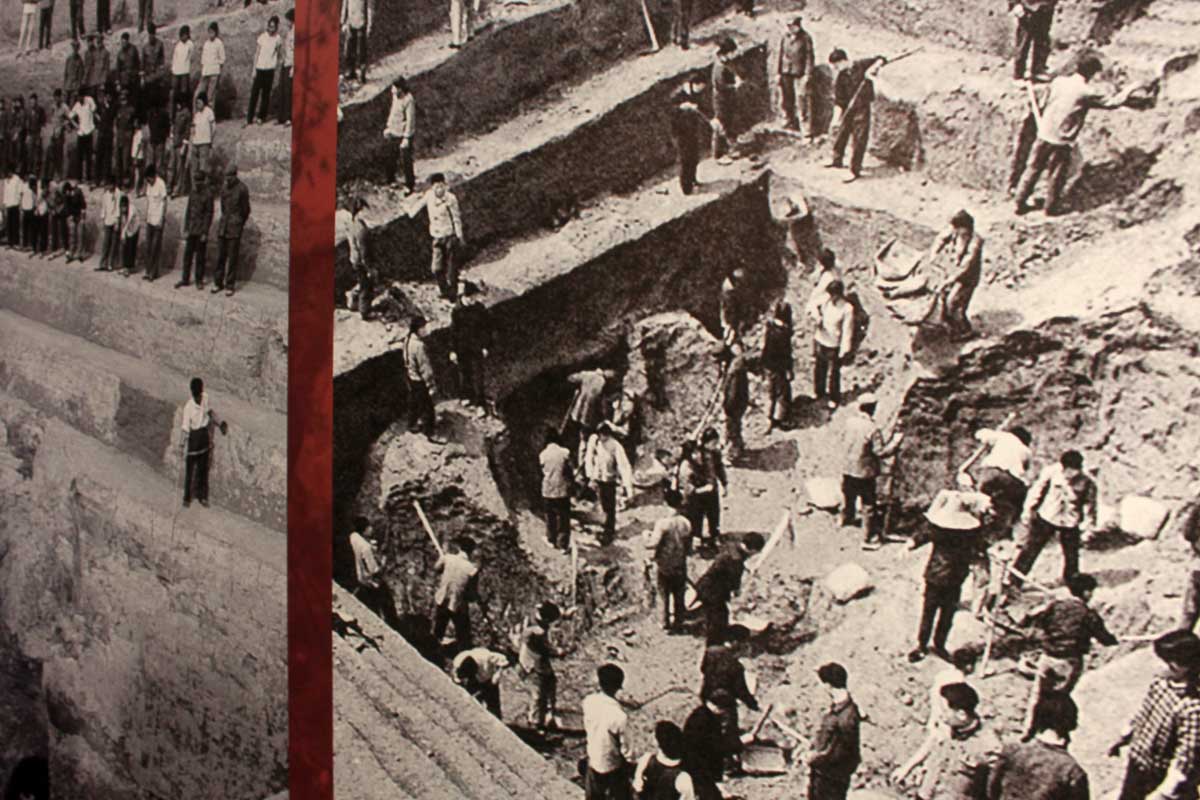
What this meant was that Changsha had lost centuries of its historical accumulations since the Spring and Autumn Period, important structures and possessions that would give insight into their preceding eras. Without that catastrophic event, perhaps Changsha’s overall direction would fit more similarly to a a city like Wuhan — where historical and cultural heritage are central to their identity and plays a big role in reeling in tourists from all over the country.
Instead, this enforced blank state has allowed Changsha to start afresh. Their current trajectory heads towards being one of China’s most exciting global cities — we’ll explore more of that later.
2) Worldwide Environmental Concerns
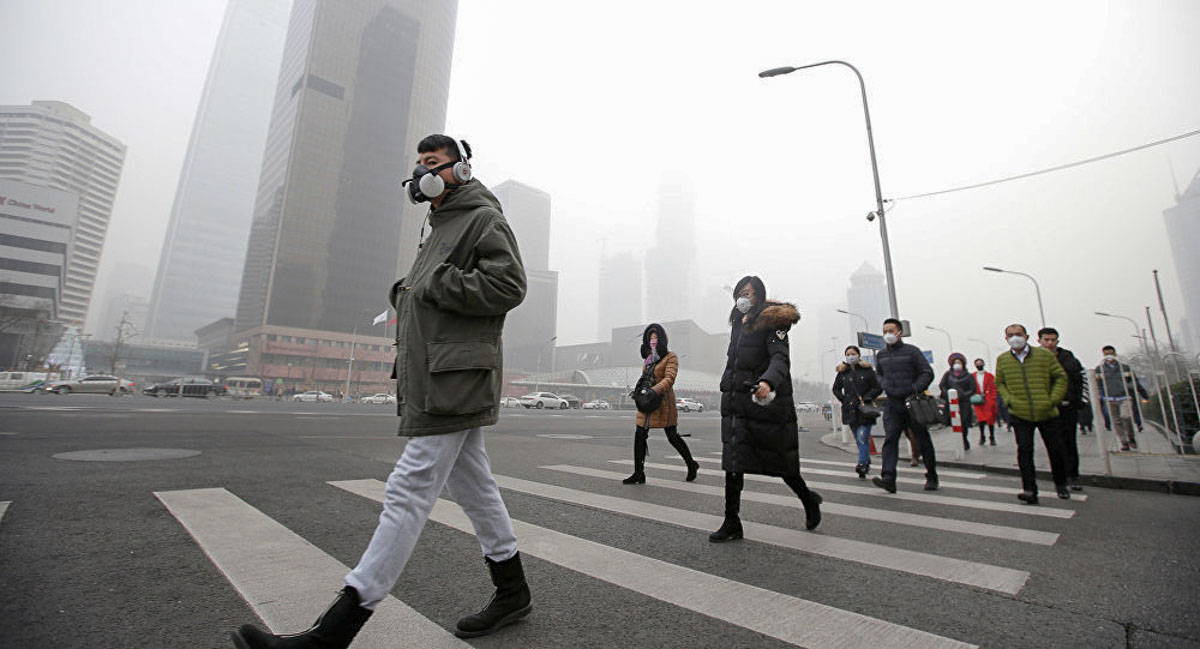
China’s rapid industrialisation has raised a host of serious environmental issues. They are the world’s largest source of carbon emissions — the amount of cars on Chinese roads, the country’s reliance on coal burning, and fast-growing population amplifying the problem.
In fact, Changsha ranks high on the chart of major tourist cities with bad air quality. But the Chinese government’s commitment to reduce its carbon footprint has shown itself in Beijing’s incredible transformation — it went from ranking 58th in air quality to 9th of all cities in a matter of a months.
It’s proof that policies have the potential to create massive positive change, and Changsha’s trove of ambitious developments are right up the environmentally-friendly alley.
3) China’s Rapid Technological Advancement
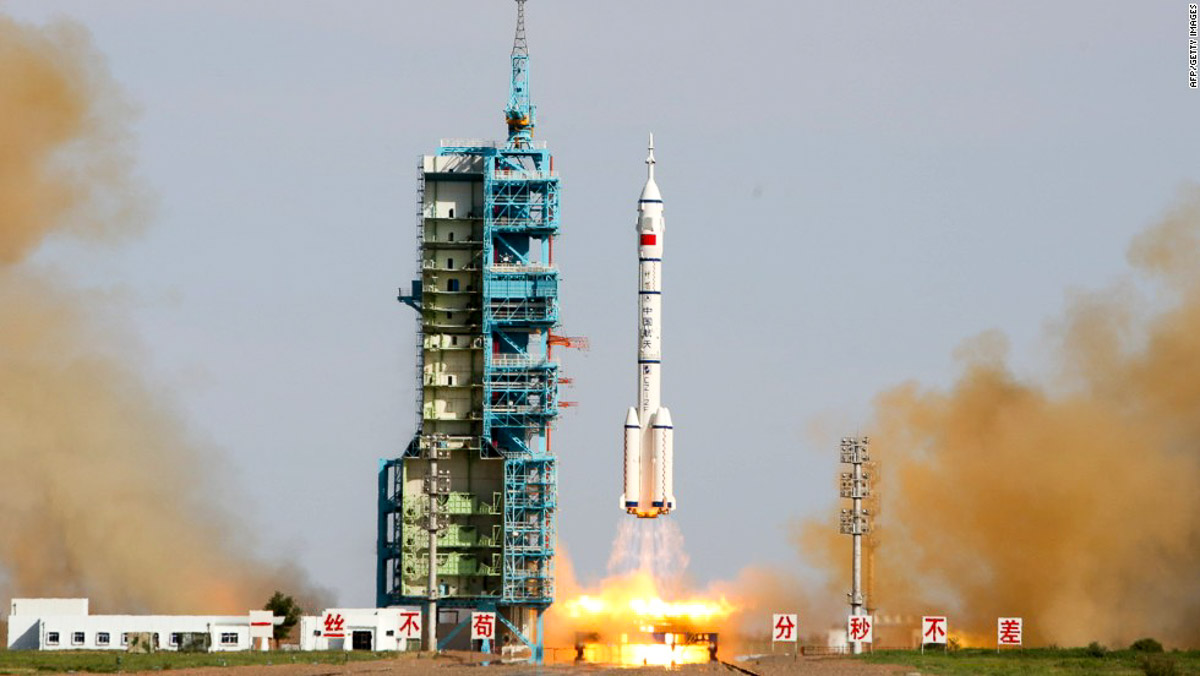
If you had me in an induced coma and told me that we now live in a time where beggars only accepted cashless transactions, I’d have predicted that we were somewhere in 2050, or that you are mildly delusional.
The reality is that this is China 2019, where no one except foreigners use cold hard cash, or even bring out their wallets. From restaurants to beggars to illegal roadside stalls, everyone accepts money through WeChat Pay. In fact, this is merely a tiny example of the progress China is making in terms of technological advancement in consumer experience.
In 2016, President Xi Jinping expressed his vision for China to become a global leader in science and technology. He wasn’t playin’. All over the country today, new innovations and bold projects are popping up as quickly as moles in Whac-A-Mole boss mode. From space missions, to floating solar plants to freagin’ artificial moons, they are leaving no stone unturned.
Changsha, as you will soon see, is no exception to that.
The Exciting Changsha of the Future
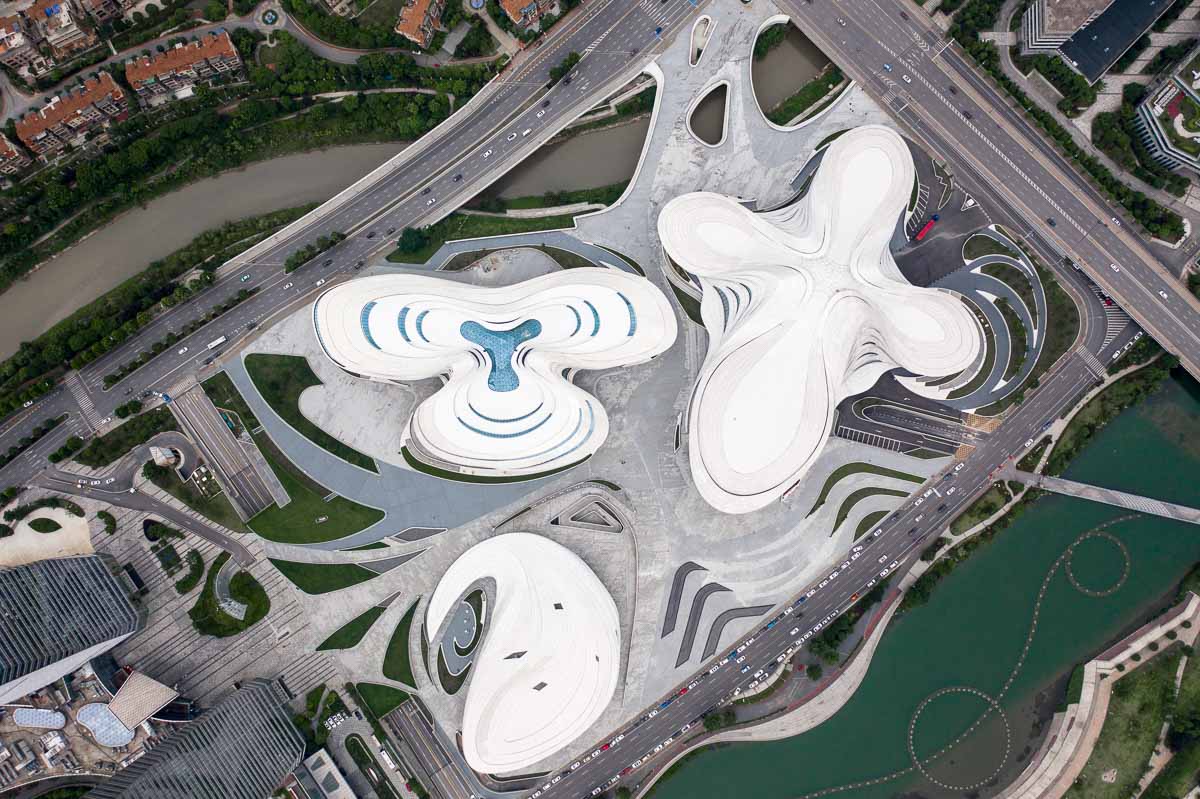
With all of the above points in consideration, the current Changsha that you see and the future its heading towards make a lot more sense.
Forbes have declared Changsha as “China’s most suitable city for the development of tourism”. World renowned architectural firms seem to view Changsha as the perfect canvas for their outlandish experiments because of this. As of right now, the Changsha Meixihu International Cultural and Arts Centre and the Lucky Knot Bridge are the standout pieces, but the painting is still nowhere near complete.
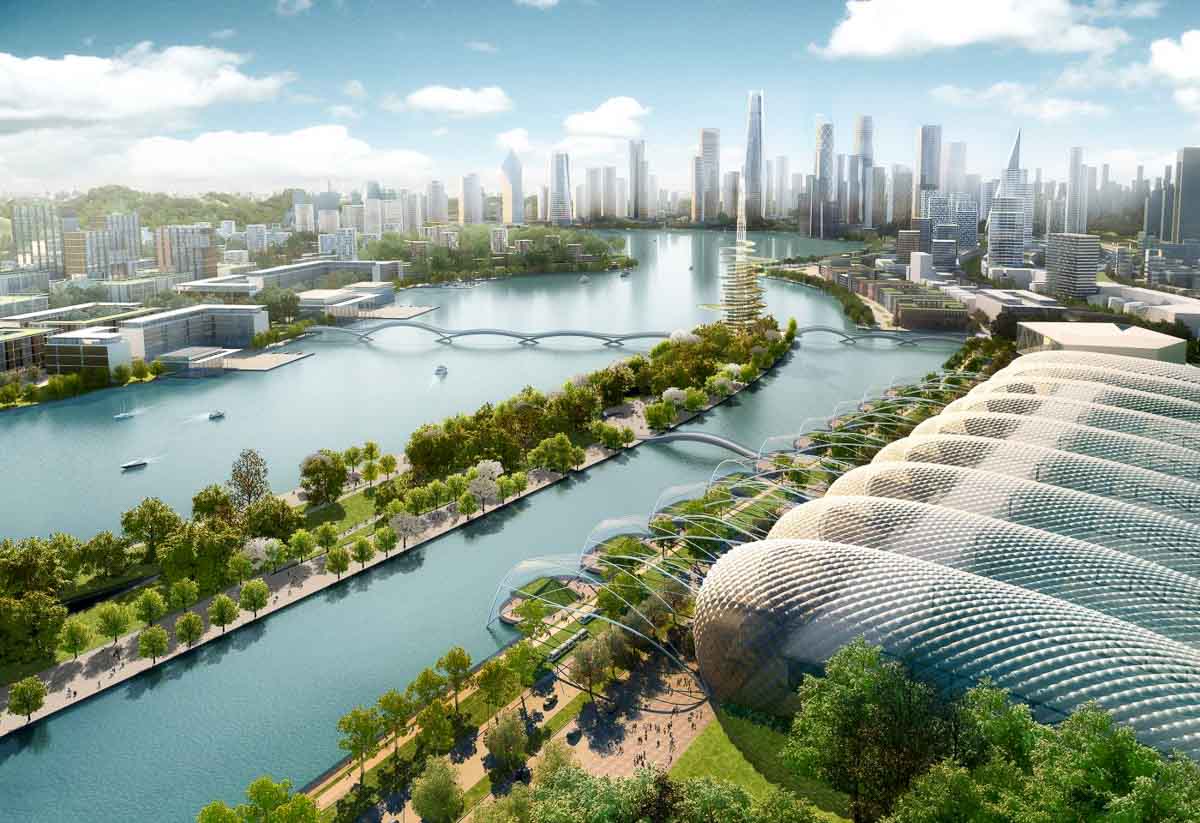
Construction for an elaborate first-class eco estate is currently underway. The grand Meixi Lake project is designed radially surrounding a 40-hectare lake. According to KBF, the firm responsible for the project, it will feature a holistic system of distributed energy plants and urban agriculture to complement its goal of a living space where its residents’ well-being takes center stage.
The plan is for boats to be the primary form of transportation — a drastic environmentally conscious decision. It wants to phase out the need for cars entirely. Roads will still be laid out for vehicles to pass through in case of emergencies, but even if there will be cars, it will be possible that drivers will soon not be needed at all.
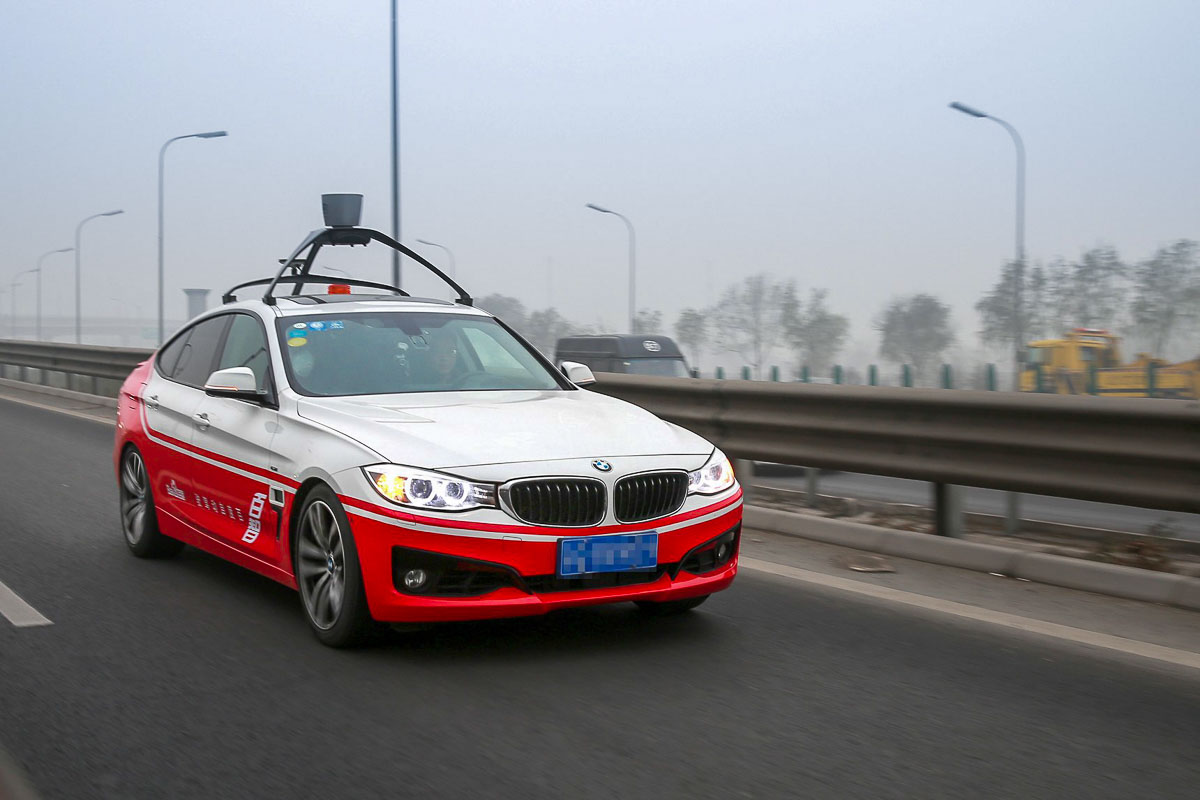
Baidu (China’s Google) is currently rolling out beta tests for self-driving cars in Changsha. Although it’s hard to foresee just when futuristic experiments like these will come to fruition (largely due to consistently bad traffic congestion), it’s clear the role that Changsha sees itself playing in China’s development.
Modern City, Modern Problems
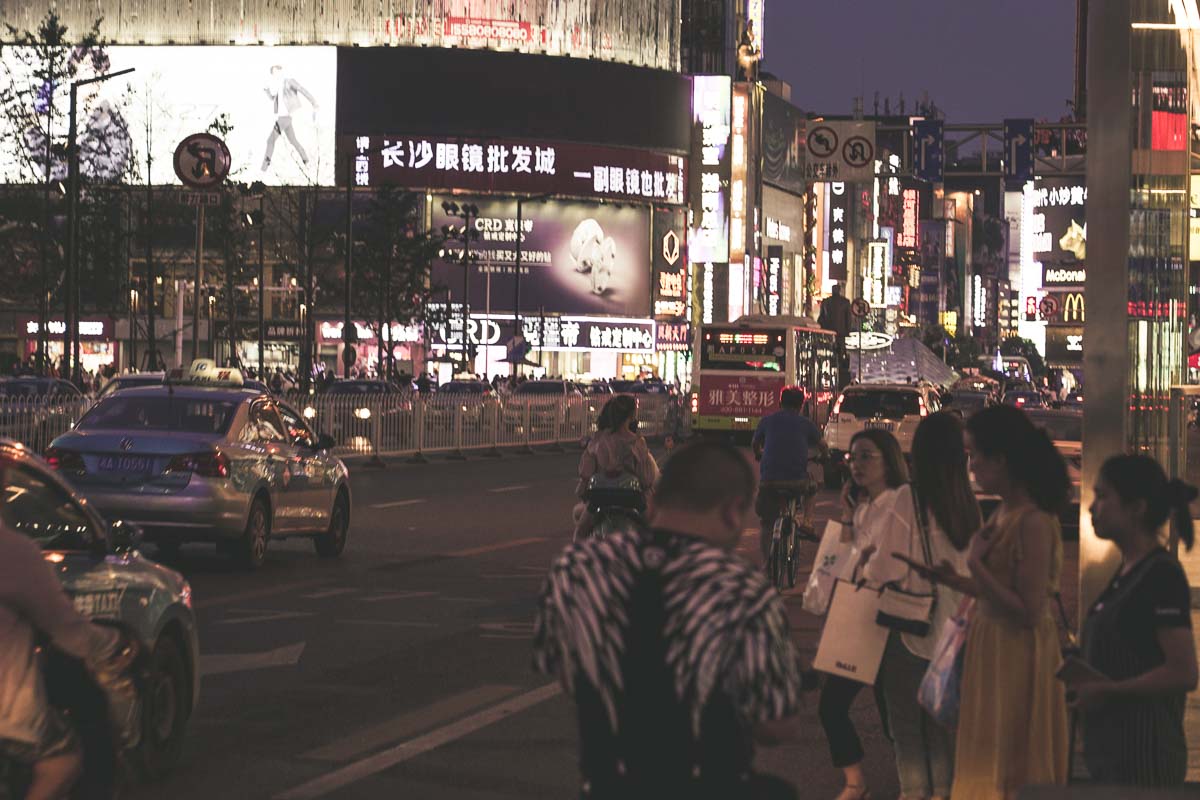
But what about its people? Is Changsha really home to the country’s happiest men and women? I decided I wanted to hear straight from the horse’s mouth, not a dubious survey from the country’s tourism board. I realised that even for a city so progressive on its facade, there are problems underneath the surface that linger quietly.
The Stresses of Education
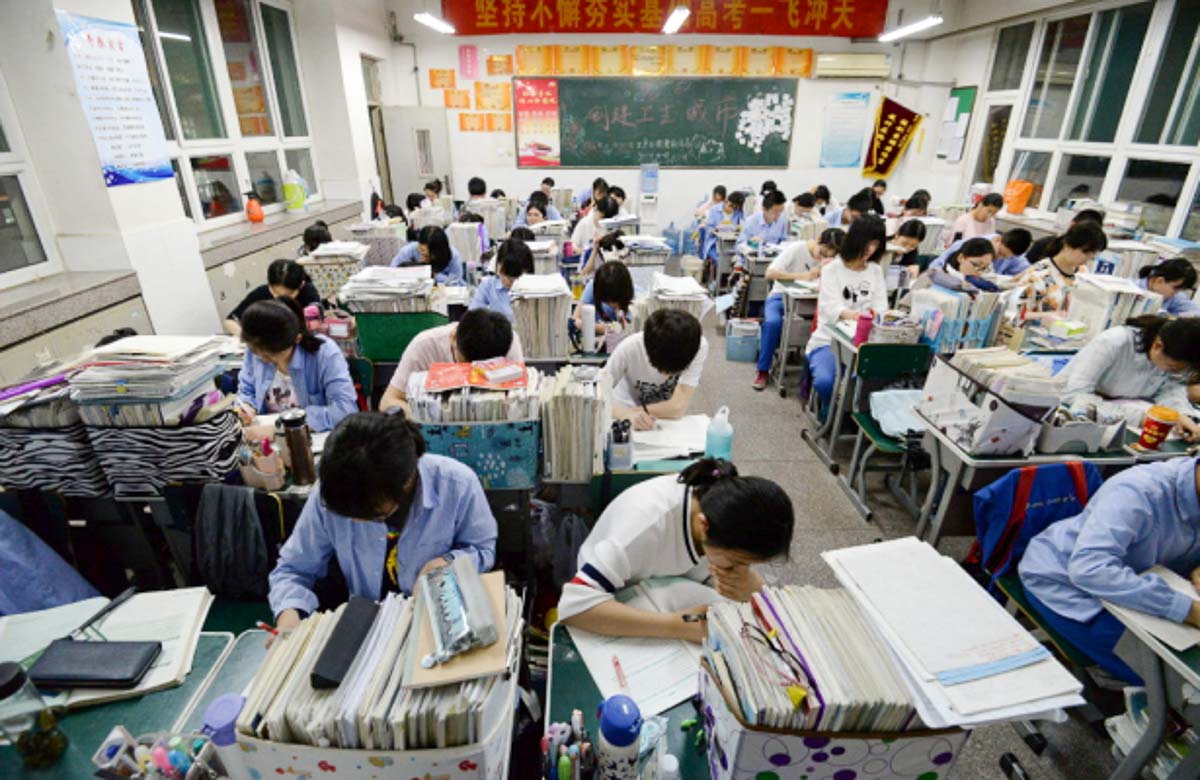
On a Wednesday evening in Changsha, we arranged to tour the city’s hotspots with Jagger, a 24-year-old local we met on a couch-surfing platform. Bringing us around the city, we talked endlessly about the cultural and societal differences between both of our countries, stopping occasionally to savour an oily snack.
He points over to a high school a few metres ahead of us on Taiping Street, a popular hangout for the younger crowd. I immediately notice a congregation of middle-aged men and women, chatting furiously and tapping away nervously at their phones. They’re parents waiting for their kids to leave the compound. It’s 10.30pm.
“The day after tomorrow’s a big day for these parents and their kids. In China, we have this huge exam that everyone has to take, and it more or less determines how bright their future will be.” He’s referring to Gao Kao — the National Higher Education Entrance Examination that all students have to sit for if they hope to receive a university education. The stresses that the students face are palpable and well-documented.
“How well did you do?” I asked. He managed a nervous laugh: “Not too well.”
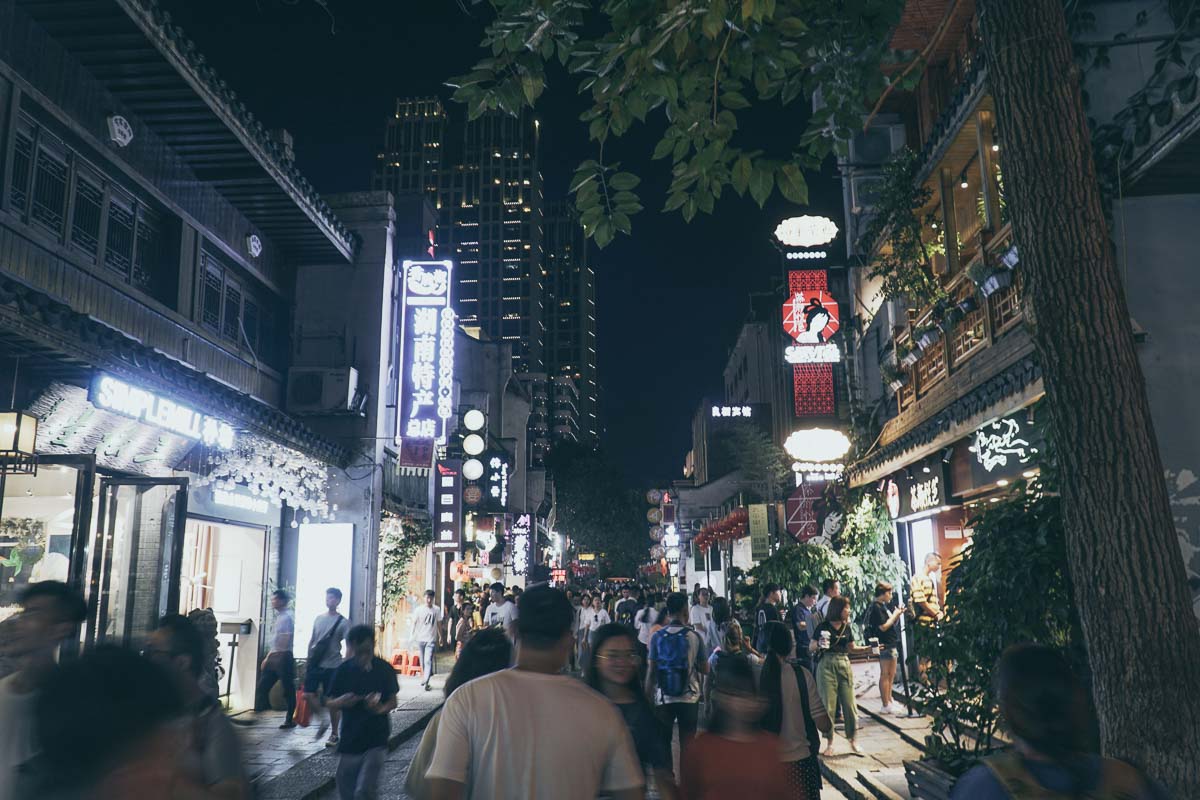
Jagger continued: “Tomorrow, many of these shops won’t be open, they don’t want the noises to disrupt the students from studying.” He told me that many roads across the country will also be diverted in order to ensure a smooth journey for buses carrying students to school. These measures sound a little hardcore, until you realise the repercussions of a low score.
China’s top universities may accept just one out of 50,000 applicants, and the prestige of the school you attend directly affects your chances of employment, and even marriage. Everybody wants their child to marry someone capable, and their educational background is seen as a sign of how well they can take care of their spouse.
The country’s urban graduate unemployment rate is also around 4% — which means one out of 25 people, after years of struggling for a piece of paper, will realise it was worthless all along. Even for those who do decently in the exams, this ever-increasing competition for jobs means that young people are finding it hard to achieve a lifestyle beyond making ends meet.
Matters of the Wallet
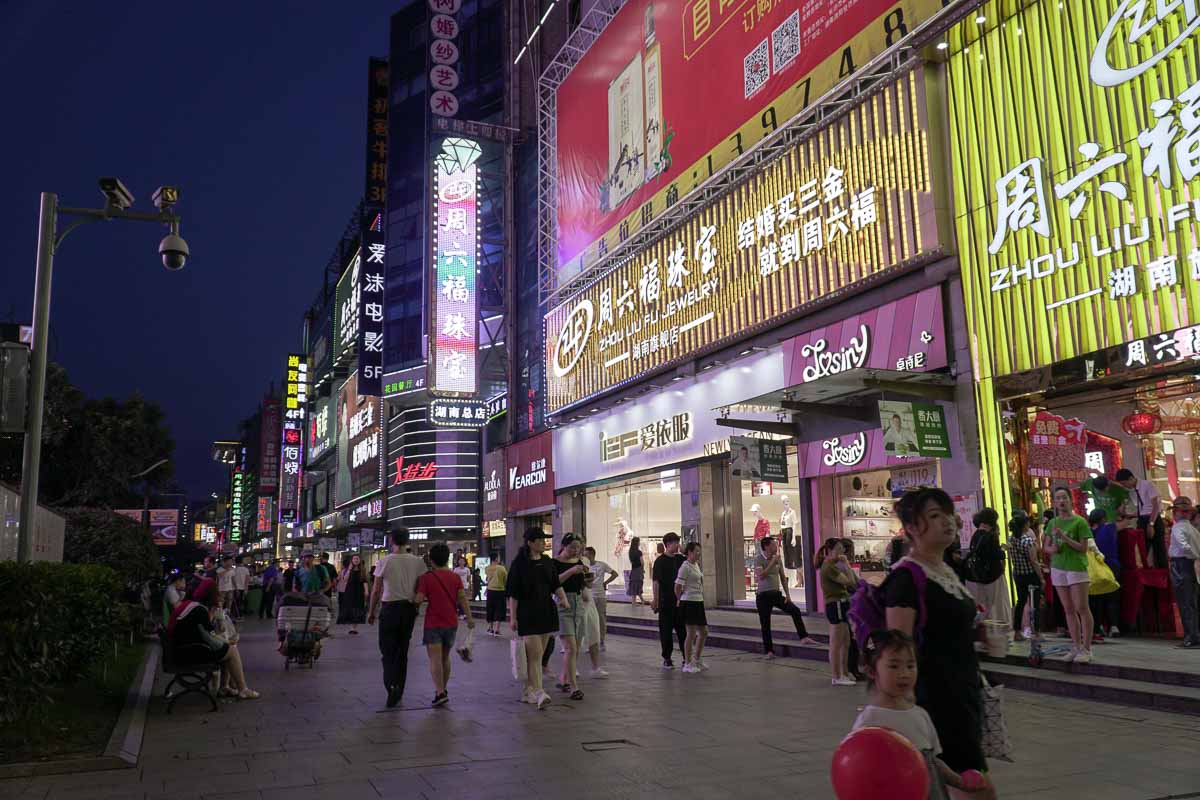
“The cost of living (in Changsha) is not as high as other cities, but we don’t earn a lot of money either.” According to Jagger, a month at an entry-level job in Changsha pays you 3,000 – 4,000RMB, a similar figure to that in larger cities like Beijing. The cost of renting at a small apartment and its bills would cost close to half that amount.
“It’s enough for me to live comfortably. I’m not someone who buys a lot things. But there’s no way I’d be able to afford to have a girlfriend — there’s no point anyway, I’d need to borrow a lot more money from my parents to be able to marry her. And our kids, there’s just not enough money to raise kids.”
China’s youth are increasingly resistant of the idea that marriage is essential. Only 7.2 out of 1,000 people got married last year, a staggering amount. It’s not hard to see why too. In Singapore, we’re given various financial incentives to have more children, but no such relief is provided to our counterparts in China.
… and Matters of the Heart
Jagger lives alone in a small studio apartment on the outskirts of the city. It was getting late, and I wondered how he was going to get back home. “Don’t you have work tomorrow?” I asked. “I don’t have a job now. I just quit.”
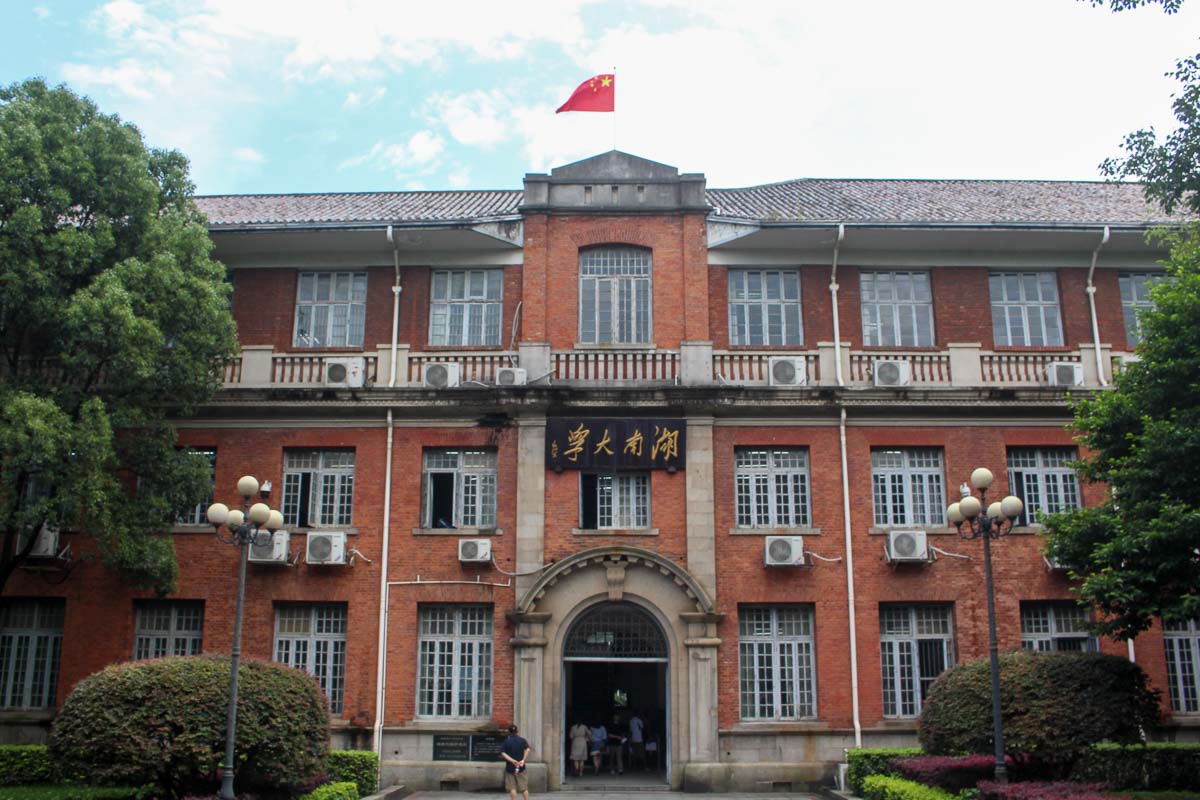
For close to a year, he had taught children the skills he picked up studying media broadcasting in university. That job paid him 6,000RMB a month — a significantly higher amount than the average university graduate at an entry level job (3,000 to 4,000 RMB). From what he’s told me so far about the difficulties of finding well-paying jobs, I was perplexed as to why he had let such an opportunity go.
“I didn’t like it. I felt like I was wasting my life away, going to work at 9 and leaving at 6. I was living for the weekends. Now my aim is to work several part time jobs so I can have more flexible work hours to do the things I like.”
I realised then that the pursuit of a meaningful career is universal across the world. Jagger, like many others, are choosing the path of freedom and interest over that of an iron rice bowl, even if that is hard to come by in his own country.
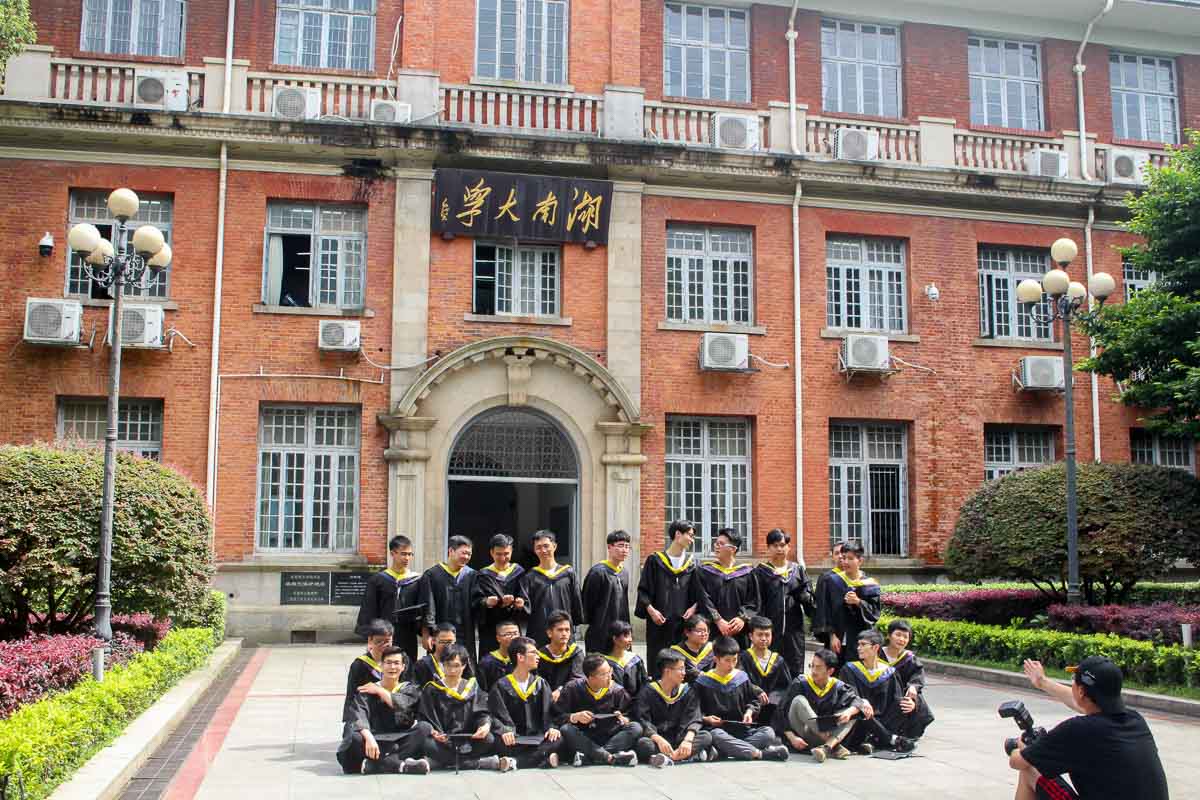
That conversation had reminded me of a scene I witnessed earlier in the day, of students at the tail end of the schooling spectrum. Graduates of Hunan University swarmed around the entrance of their campus, posing excitedly with the front gate, and then with a statue of Mao opposite the road.
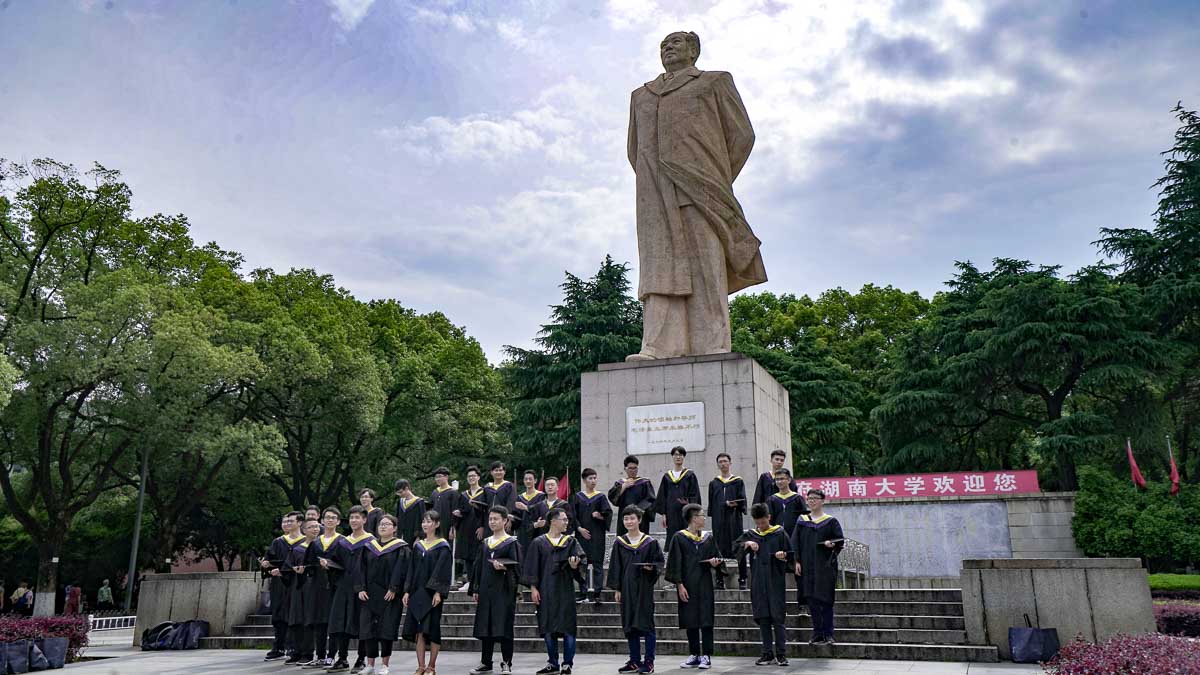
I thought about the journey they were about to embark on in the real world and whether they’d be able to make it. Navigating amidst the heavy currents of financial sustenance, self-fulfilment, and societal and familial expectations will not be easy, especially in country like China. I looked up at the graceful monument bearing down above their heads, their enthused but cautious smiles hauntingly similar.
What Mao Zedong Means to the People
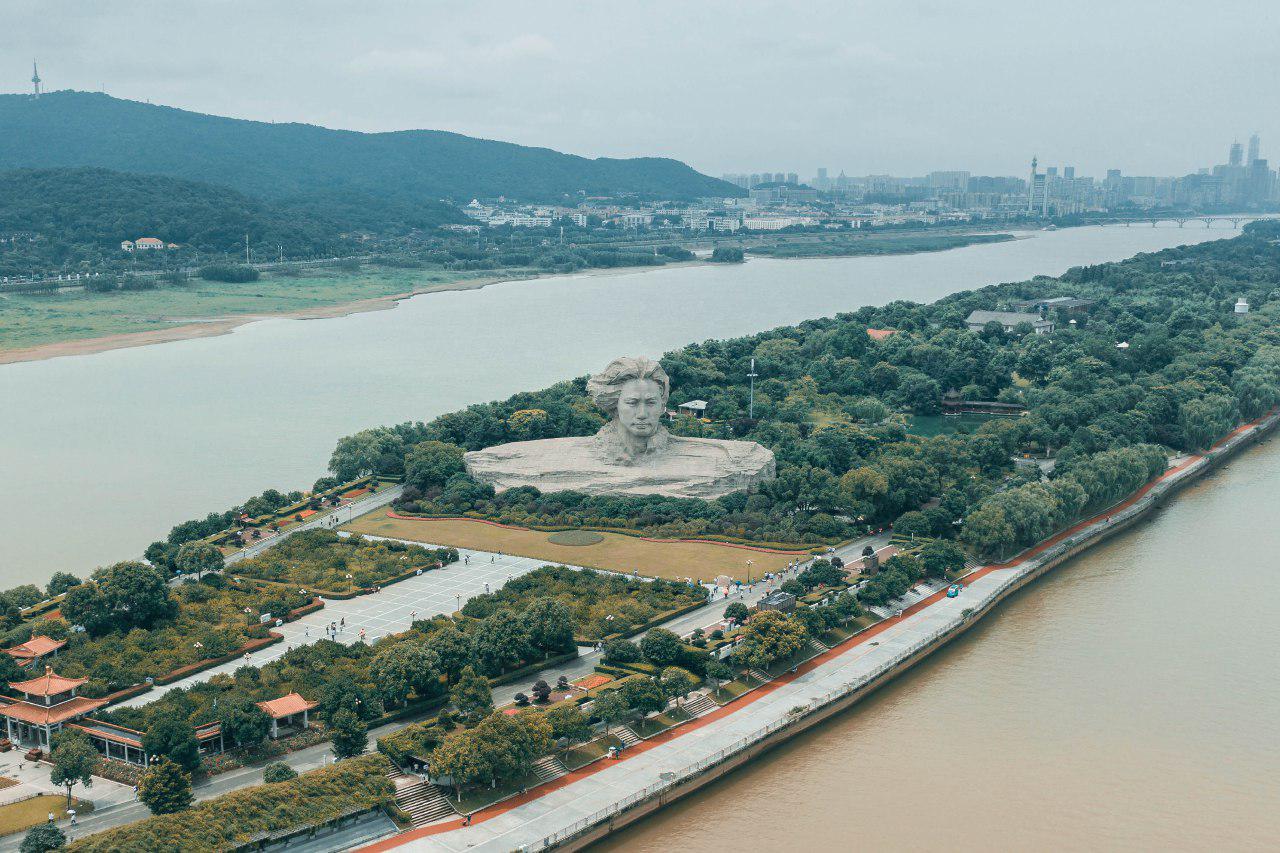
Sandwiched between the city land and Yuelu Mountain is Orange Isle — an island that used to be known for its… well, oranges. It’s a beautiful isolated garden frequented by many past and present, with the first recorded reference to it being in the year 305. These days, it’s known for the majestic statue of modern China’s founding father.
Mao in a Nutshell
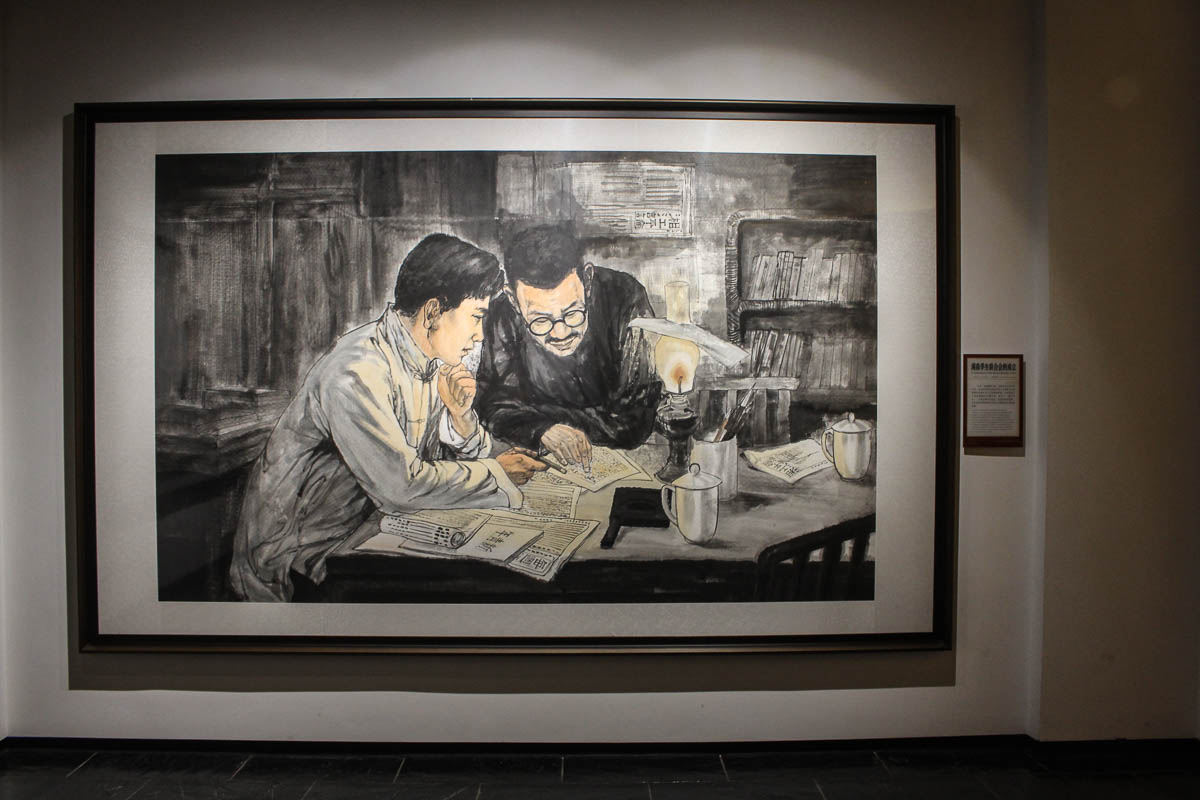
For the uninformed, Mao was a 20th century revolutionary who once led the Communist Party of China (CPC). His main achievement was to bring the country out of the civil war against the Nationalist party, for the first time truly uniting the people after years of unrest. However, his radical ideas had also sent the country into the worst famine in the world’s recorded history, killing 16 to 40 million people in four short years.
Opinions of Mao are as divided as the yin and yang. There are groups of people who worship his achievements, groups that disagree with his idolisation, and those who remain neutral. But most Chinese people also know that Mao wasn’t the perfect leader.
So why build a massive statue of him, and on the island of oranges?
Changsha’s Golden Boy
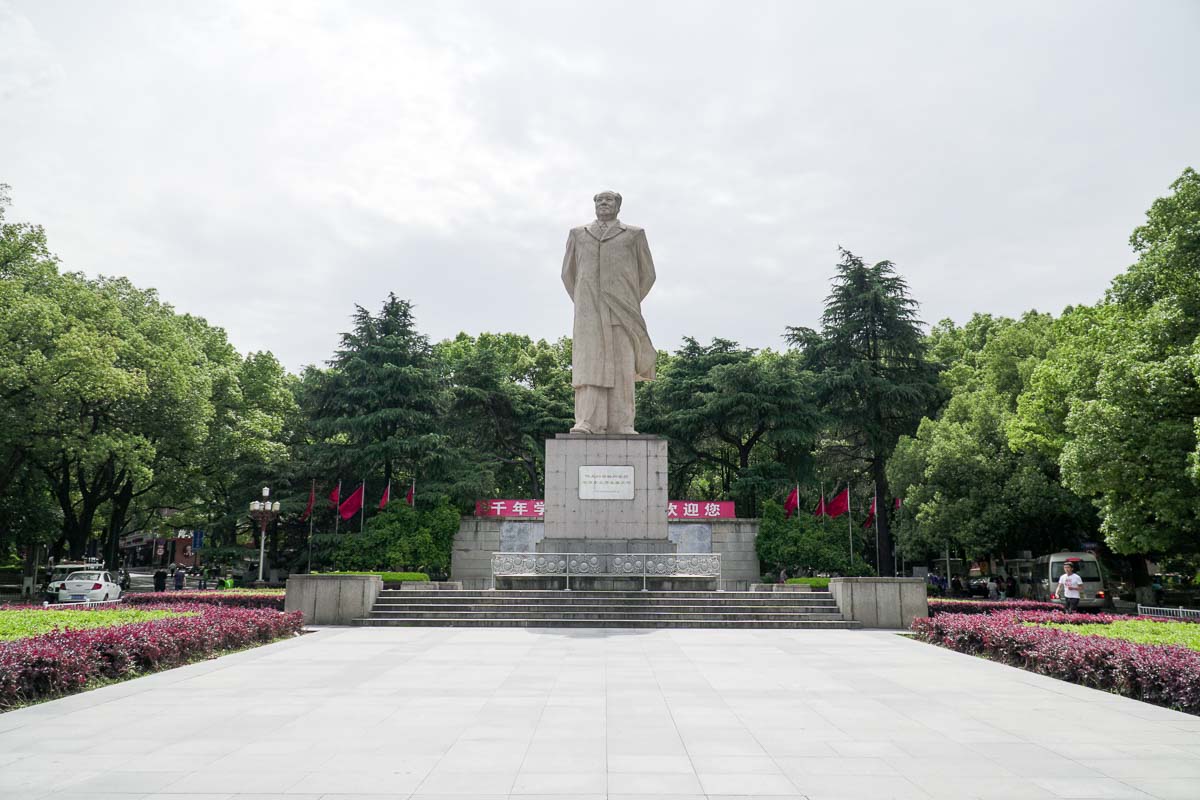
Before he became China’s most recognisable figure, Mao Zedong was a (handsome) young man with an intense, innate sense of national pride. He grew up in neighbouring Shaoshan, and attended the Hunan First Normal University in Changsha during his formative years as a 20th century political activist. It was here, under the guidance of several mentors, that he formulated most of the political ideologies that will come to define post-war China.
The city’s resplendent natural landscape also provided him with much needed respite from turbulent times. More importantly, it served to inspire his visions for his country.
On the Orange Isle, he philosophised under orange trees and discussed important matters with fellow revolutionaries, penning poems that displayed his intellectual capacity and provoked deep thought on the country’s ons-and-goings. Hence this, and a large exhibition hall within the sculpture detailing youthful Mao’s life in Changsha.
What the Locals Think of Mao
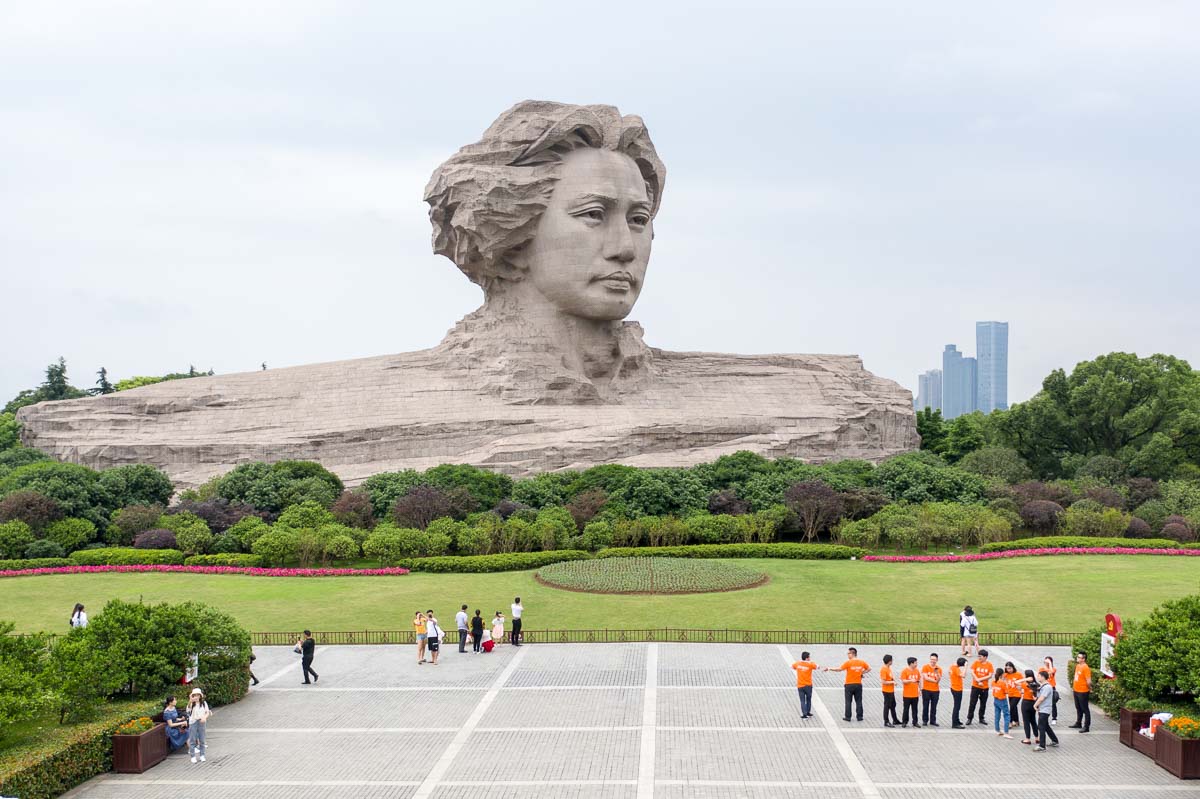
A conversation with a local cab driver proved important in helping me understand the public sentiment towards the controversial leader. I saw a beige, mini Mao bobble head figure sitting on his dashboard, and decided to pop the question: “How is Mao viewed in China?”
He explains that he was born at the height of the Cultural Revolution. His parents had recounted stories of their lives and that of their grandparents — and he innately understood the difference between the times.
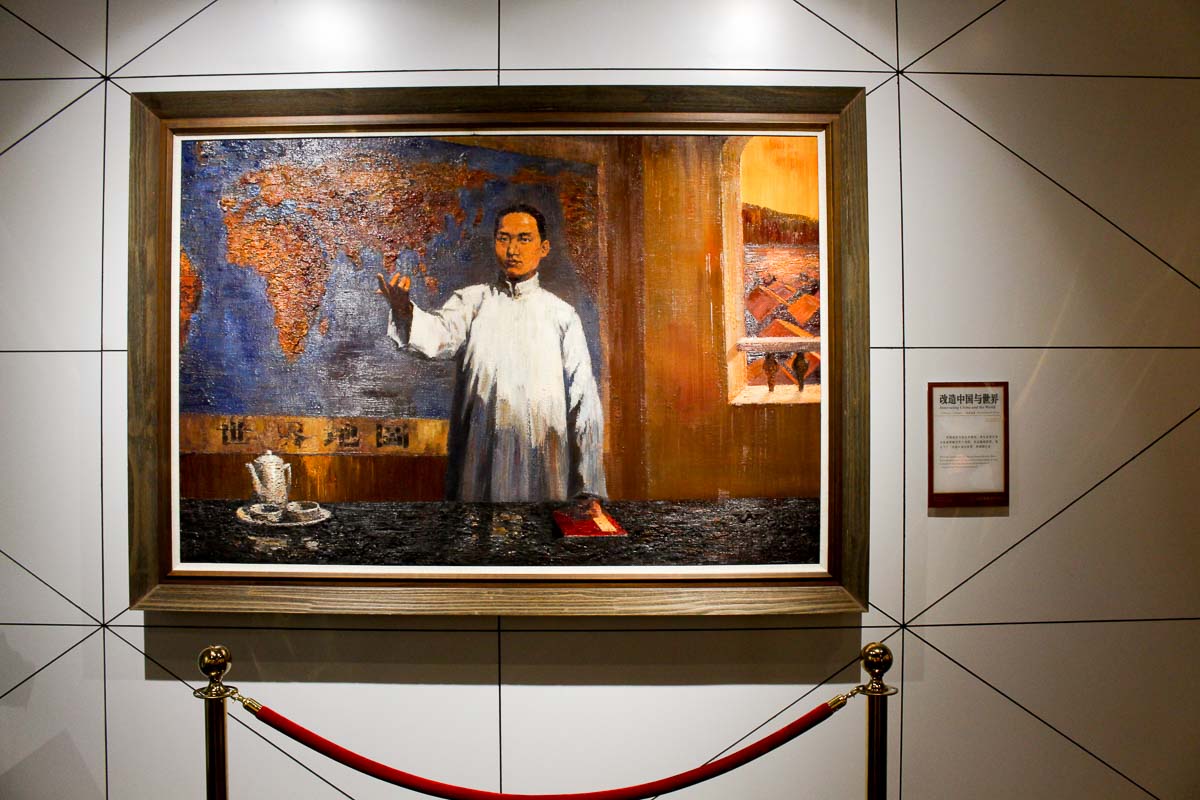
“In the past, people were kinder to each other. Nowadays, money and individual growth takes precedence over everything. If you ask the younger people on the streets, they wouldn’t be able to tell you even the brief history of our country. The sense of national identity is no longer there. There is no care for one another.”
These views are backed up by my earlier conversations with Jagger, who insist that the education system above all has cultivated a dog-eat-dog type of culture. If you don’t protect your own interests, no one else will.
“He put China first, in a time when the country’s leaders did anything but that. A country as large and powerful as China was consistently getting pushed around by foreign powers, leaving their own people to fend for themselves.”
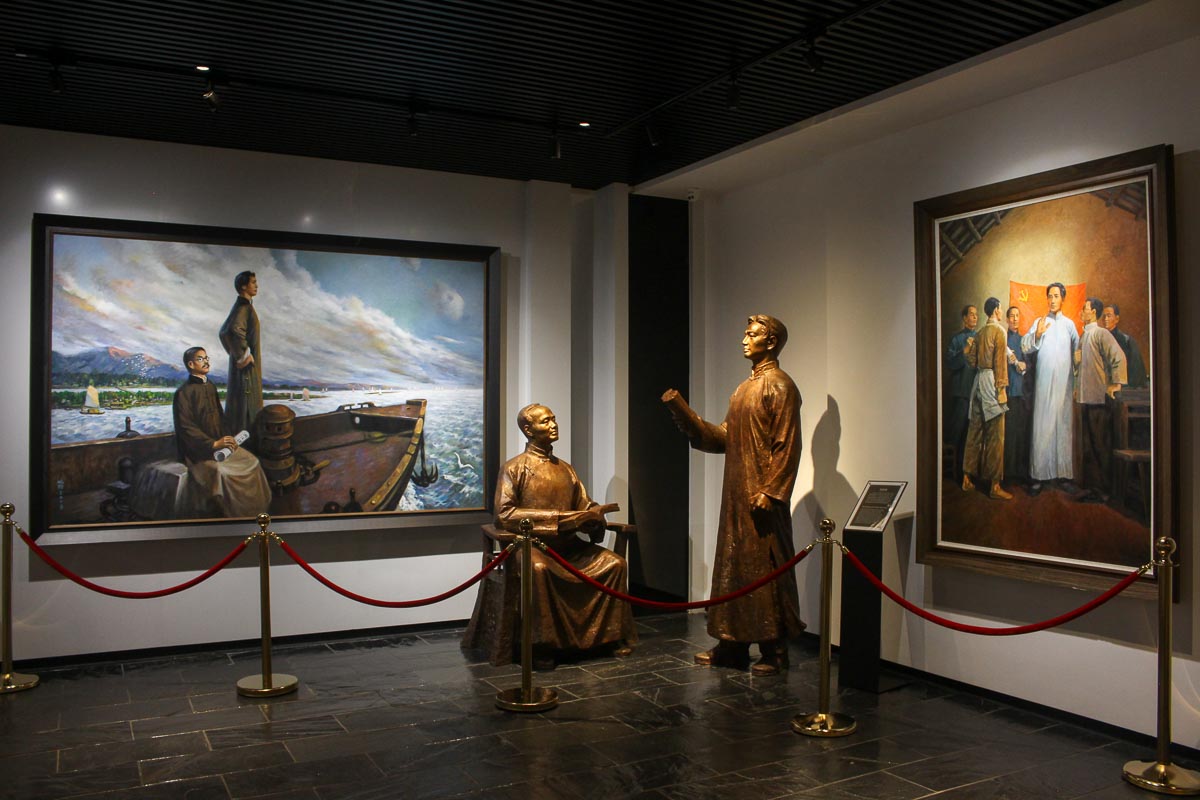
During his time, Mao also advocated for women’s rights, he pushed for every citizen to attain a certain level of literacy and education, and halted corruption to some extent. These actions, coupled with his consistent charismatic rallying of the people across all his days, earned him the trust of the common man.
I’ve learned that the older generation continue to see Mao, or the times of Mao as a better part of their lives because of the times they used to live in. A time of consistent unrest and a goal simply to survive. The win of the communist party signified that for the first time in a long, long, long time, the country was united as one and they could finally push on to achieve a common goal.
A Symbol of Spirit and Purpose
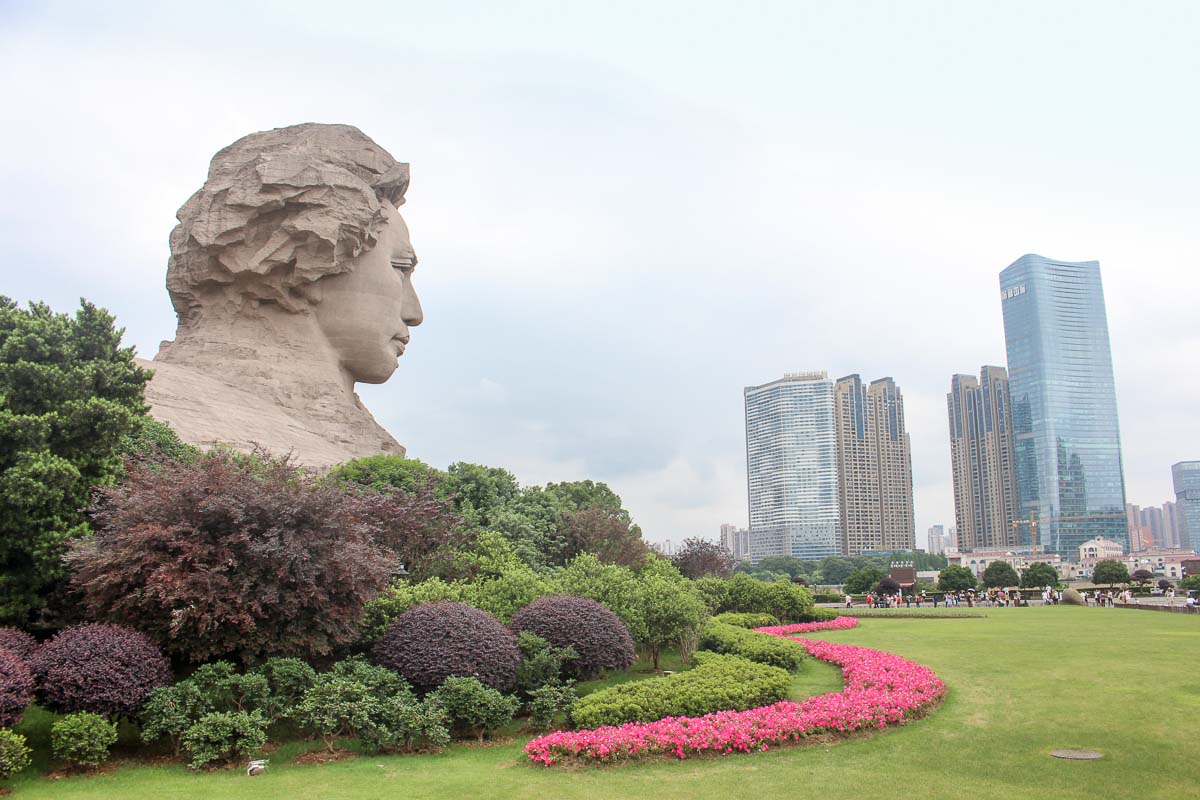
In Changsha, the purpose of his statue is becoming clearer to me. It embodies the revolutionary spirit, and aims to impress upon the next generation that ideals can be turned into reality. The times have changed, the goals of its people undoubtedly have as well. But the central ethos of turning dreams into something tangible still has value in today’s society.
I stared at the statue once more. His long and wavy hair seemed to float majestically in the direction of a rare Changsha breeze. From where I’m standing, his eyes are fixed firmly on a block of plain, murky high-rise buildings — a sight more representative of his times than the shiny, towering, extravagant counterparts beside them — and you can’t help but ponder about the brains behind the man, what he would think about the development of his fast-growing hometown today.
As Changsha rapidly accelerates towards a brighter, eco-friendly tech-savvy future, I’ve learned that these abundant homages to Mao serve more symbolically as a homage to the city’s past, the lessons from its mistakes, and the revolutionary spirit that once galvanised the entire country.
The Case for Travelling Deeper
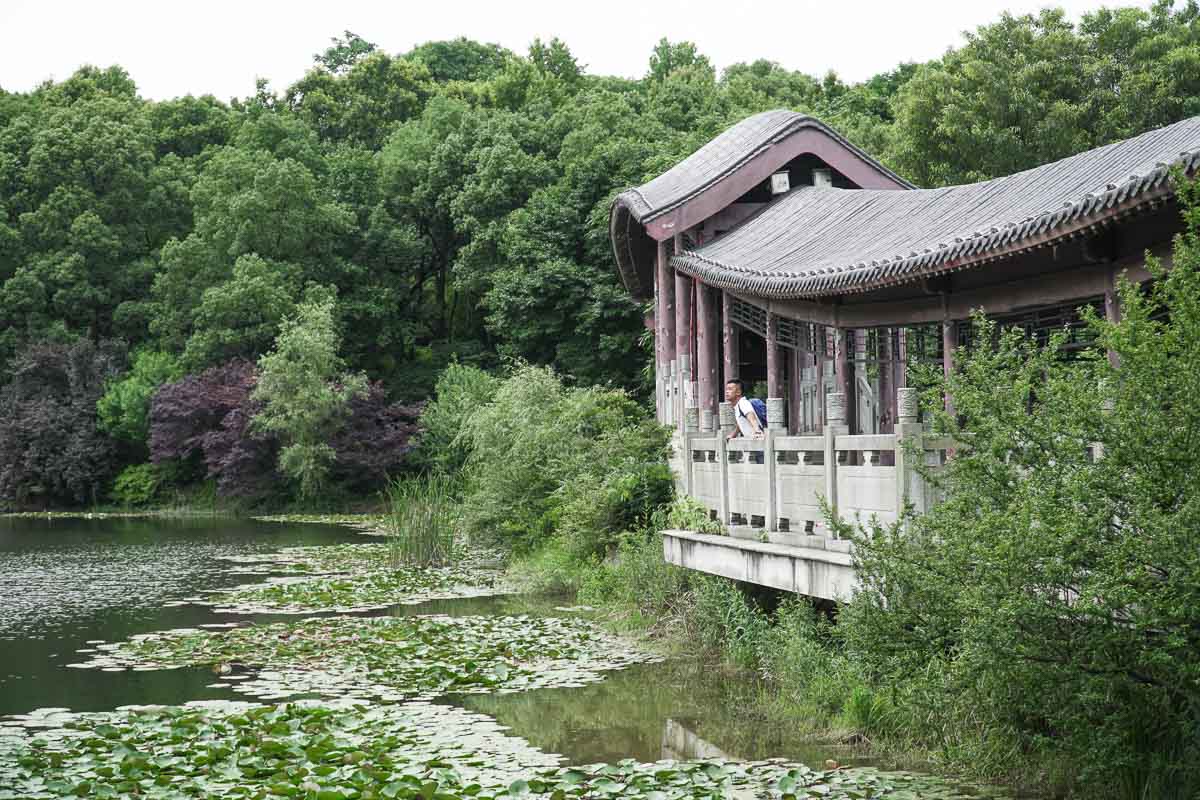
“No person can be understood except against his background,” wrote Michael Lynch in his biography of Mao. I believe that the same can be said of places.
The act of travelling can prove merely to be a pursuit of trivial experiences without the effort of diving deeper into why a place is the way it is. When you do, centuries of captivating chronicles will dawn upon you, a wave of second-hand nostalgia that’s hard to shake off. I have not become an expert on Chinese history through these efforts (nowhere near in fact), but the essence of this captivating city is not lost upon me.
Travelling deeper is a worthwhile endeavour — and I assure you, you’ll love it 3,000.
Check out our Central China content:
– 12D Central China Itinerary — Wuhan, Changsha, Zhangjiajie
– 19 Reasons to Visit China’s Most Underrated Cities
– 18 Things to Eat in Central China Under S$20
For more travel inspiration, follow us on Instagram, YouTube, and Facebook!
View this post on Instagram


